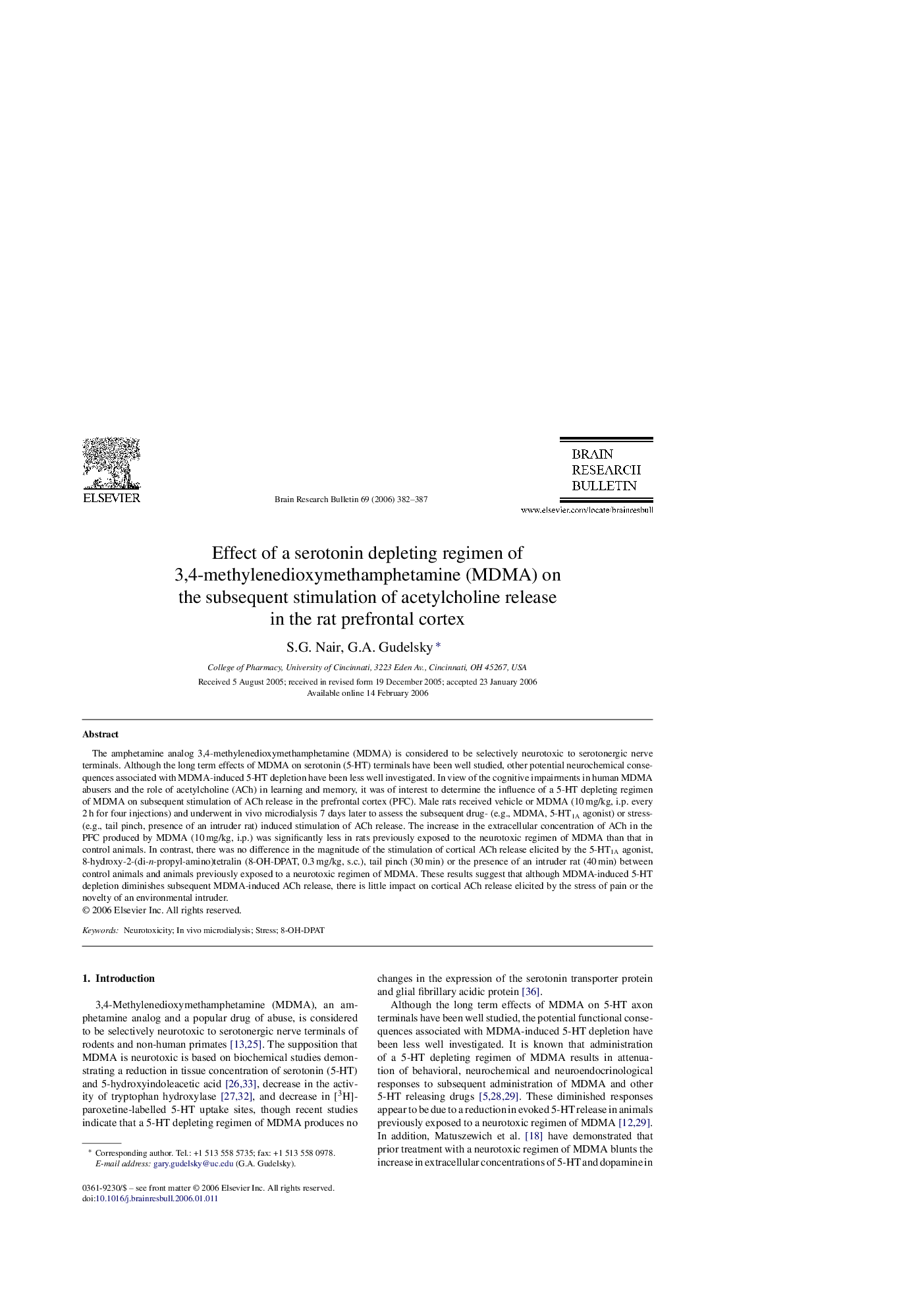| Article ID | Journal | Published Year | Pages | File Type |
|---|---|---|---|---|
| 4320389 | Brain Research Bulletin | 2006 | 6 Pages |
The amphetamine analog 3,4-methylenedioxymethamphetamine (MDMA) is considered to be selectively neurotoxic to serotonergic nerve terminals. Although the long term effects of MDMA on serotonin (5-HT) terminals have been well studied, other potential neurochemical consequences associated with MDMA-induced 5-HT depletion have been less well investigated. In view of the cognitive impairments in human MDMA abusers and the role of acetylcholine (ACh) in learning and memory, it was of interest to determine the influence of a 5-HT depleting regimen of MDMA on subsequent stimulation of ACh release in the prefrontal cortex (PFC). Male rats received vehicle or MDMA (10 mg/kg, i.p. every 2 h for four injections) and underwent in vivo microdialysis 7 days later to assess the subsequent drug- (e.g., MDMA, 5-HT1A agonist) or stress- (e.g., tail pinch, presence of an intruder rat) induced stimulation of ACh release. The increase in the extracellular concentration of ACh in the PFC produced by MDMA (10 mg/kg, i.p.) was significantly less in rats previously exposed to the neurotoxic regimen of MDMA than that in control animals. In contrast, there was no difference in the magnitude of the stimulation of cortical ACh release elicited by the 5-HT1A agonist, 8-hydroxy-2-(di-n-propyl-amino)tetralin (8-OH-DPAT, 0.3 mg/kg, s.c.), tail pinch (30 min) or the presence of an intruder rat (40 min) between control animals and animals previously exposed to a neurotoxic regimen of MDMA. These results suggest that although MDMA-induced 5-HT depletion diminishes subsequent MDMA-induced ACh release, there is little impact on cortical ACh release elicited by the stress of pain or the novelty of an environmental intruder.
